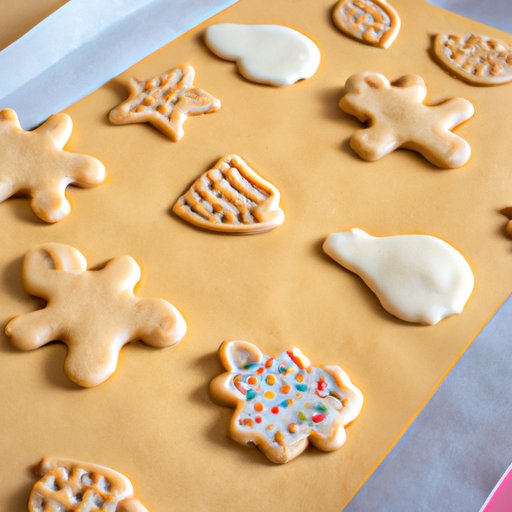
I. Introduction
Who doesn’t love a fresh, warm homemade cookie? Whether you’re a seasoned baker or a total novice in the kitchen, there’s something special about crafting your own batch of cookies from scratch. In this article, we’ll guide you through the process of making perfect homemade cookies, from the importance of using quality ingredients to experimenting with creative flavor combinations and dietary-restriction-friendly options. Let’s get baking!
II. Step-by-Step Guide to Making Perfect Homemade Cookies
To start, it’s important to use quality ingredients and equipment. This can make a significant difference in the outcome of your cookies, whether it be flavor, texture, or appearance. Some key ingredients to have on hand include flour, sugar, butter, eggs, and vanilla extract. Additionally, having a good mixer, baking sheets, measuring cups and spoons, and a kitchen thermometer can help ensure accuracy and consistency in the baking process.
The basic steps involved in making cookies include mixing dry ingredients, creaming butter and sugar, adding eggs and wet ingredients, forming dough, chilling the dough, and finally, baking the cookies. It’s important to measure ingredients precisely, mix the dough just until combined (overmixing can lead to tough, dense cookies), and not overbake the cookies, which can result in a dry, crumbly texture.
One of the most common mistakes in cookie-making is not paying close enough attention to the dough. Pay attention to the texture and consistency of the dough throughout the process, as different cookie recipes may require different amounts of flour or liquids, and deviations can compromise the final result. To achieve different textures and flavors, experiment with techniques like using milk or cream instead of water, adding in extras like cocoa nibs, or adding ingredients like corn syrup or honey.
III. Creative Cookie Recipes to Try at Home
Tired of the same old chocolate chip recipe? Experiment with flavors to make your cookies more unique. Some of our favorite flavor combinations include:
- Chocolate chip with sea salt
- Oatmeal raisin with chai spices
- Butterscotch pecan
- Peanut butter and jelly
- Lemon shortbread
Additionally, if you or someone you’re baking for has dietary restrictions, there are plenty of creative options that cater to different needs. Try vegan cookies, made with coconut oil and flaxseed meal, or gluten-free cookies, made with almond flour and honey.
IV. Gluten-Free and Other Dietary-Restriction-Friendly Cookie Options
It’s important to be mindful of dietary restrictions when baking cookies. Luckily, there are many alternative ingredients that you can use to create a wide-ranging array of cookies. For example, coconut oil can be used instead of butter, almond flour can replace wheat flour, and maple syrup can be used instead of sugar.
When making gluten-free cookies, it’s important to pay close attention to ingredients and techniques, as gluten-free flours and ingredients can sometimes require additional liquid or binding agents to achieve the right texture. Experiment with different flours and combinations to find the recipe that works best for you.
V. Fun Ways to Decorate and Package Homemade Cookies
Once your cookies are baked and cooled, it’s time to decorate and package them in a way that makes them look attractive and gift-worthy. Consider trying out some of these simple decorating ideas:
- Frosting or icing, either spread on top or piped on in designs
- Sprinkles or other decorations like crushed nuts or candy bits
- Using cookie cutters to create fun shapes
When packaging your cookies, try wrapping them up in pretty boxes or jars with colorful ribbons or bows to present them as a special, thoughtful gift.
VI. The Science Behind Baking Cookies
There’s a lot of science that goes into making the perfect cookie. Different ingredients and techniques can lead to vastly different outcomes, so it’s important to be aware of how they interact with one another. For example, using bread flour instead of all-purpose flour can lead to extra chewy cookies due to its higher protein content, while using melted butter instead of creamed butter can result in flatter, softer cookies.
Environmental factors can also impact the outcome of your cookies. Baking at high altitude, for example, can cause cookies to spread and flatten more due to the lower atmospheric pressure and lack of moisture in the air. Experiment with different techniques and ingredient combinations until you find the perfect recipe and methods to suit your baking environment and preferences.
VII. Conclusion
With this step-by-step guide, cookie-making is accessible to any home baker. By using quality ingredients, techniques tailored to individual preferences and environmental factors, and creative flavor combinations, anyone can make perfect homemade cookies.




